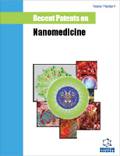Abstract
Some self-assembling peptides form stable β-sheet structures and spontaneously self-assemble into nanofibers in water. To produce a stronger self-assembling peptide gel for use in nanomedicine, including drug delivery and tissue engineering, we designed peptides that formed covalent bonds among each other. We inserted the photolinker phenylalanine azide at the N terminus, center, and C terminus of the peptide monomer, and found that the peptide gel (PheN3-CT, H-DLRLDLALDLRLD-PheN3-OH) in the container had the smallest curvature of meniscus. Phenyl azide groups form short-lived nitrenes that might insert into the chemical bonds of N-terminal amino groups in neighboring peptides. The apparent diffusivity of phenol red in the gel made by the cross-linked peptide monomer PheN3-CT was almost the same as that of self-complementary peptides with 16 amino acids (RADA16, H-RADARADARADARADAOH). HEK293 cells and 3T3 myoblasts survived in gels containing PheN3-CT. These materials may have applications in the slow release of drugs and in three-dimensional scaffolds for use in mechanical physiological conditions. Some relevant patents have also been referred in this study.
Keywords: Nanofiber, phenylalanine azide, photolinker, self-assembling peptide gel, slow release of drug model.
 10
10

